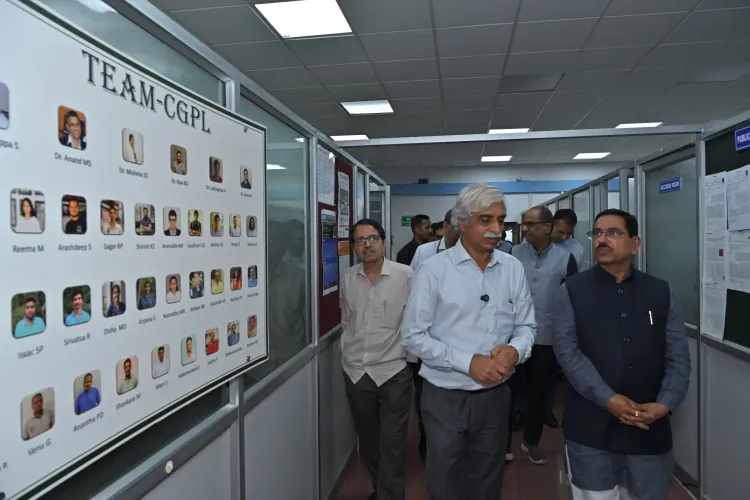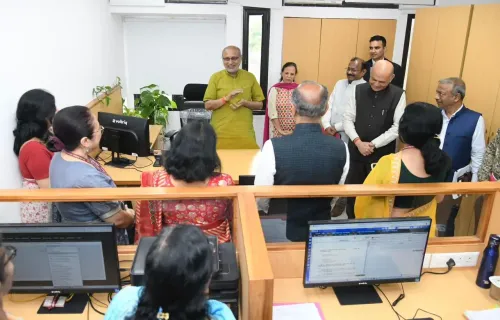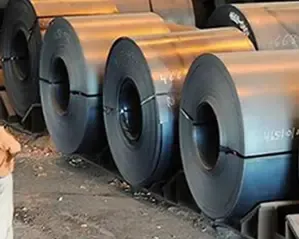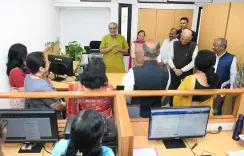How is Green Hydrogen from Agricultural Waste Revolutionizing Energy Production?

Synopsis
Key Takeaways
- The IISc has developed a method to produce green hydrogen from agricultural waste.
- The production process achieves 5 kg of hydrogen per hour with 99% purity.
- Green hydrogen can significantly reduce carbon emissions, with each kg eliminating over 1 kg of CO2.
- The initiative supports India's commitment to clean energy and sustainability.
- Challenges remain in hydrogen storage and reducing production costs.
Bengaluru, July 19 (NationPress) The Indian Institute of Science (IISc) in Bengaluru has made significant strides by developing an innovative technique to create green hydrogen from agricultural waste. Union Minister for New and Renewable Energy, Pralhad Joshi, affirmed that the Central Government stands ready to support this groundbreaking initiative.
During his visit to IISc on Friday, the minister had the opportunity to observe this notable advancement that facilitates the production of green hydrogen from bio-waste. He commended the institute for its trailblazing research.
The process utilizes agricultural waste typically incinerated in fields, allowing IISc to devise a sustainable method for generating clean, green hydrogen. According to Joshi, the current system can produce up to 5 kilograms of hydrogen per hour, boasting an impressive 99 percent purity.
Normally, agricultural waste is either burned or left to naturally decompose, which contributes to methane emissions. However, IISc has shown the world that eco-friendly energy can be harnessed from this waste—a development the minister described as a “truly Atmanirbhar” (self-reliant) achievement.
This pioneering effort in green hydrogen production stands out as a significant carbon-reducing research initiative. Each kilogram of hydrogen generated effectively eliminates over one kilogram of carbon dioxide from the air, Joshi noted.
Joshi emphasized the pivotal role of IISc in steering India towards a cleaner energy future. Through such pioneering research, the institute has gained international acclaim and instilled national pride. He also expressed his gratitude to IISc Director Prof. Govindan Rangarajan, faculty members, and researchers.
The union minister received an in-depth briefing on the advanced bio-waste-to-hydrogen system created by Prof. Dasappa and his team. He labeled the innovation as not only a national milestone but also a “global benchmark.”
Thanks to Prime Minister Narendra Modi's foresight, the National Green Hydrogen Mission has been initiated with an investment of Rs 19,744 crore, yielding promising results. However, Joshi emphasized that the success of any national initiative is driven by not just funds but also determination.
India is now positioned to produce 500,000 metric tonnes of green hydrogen annually and has an additional renewable energy capacity of 125 GW. The total investment in this sector amounts to Rs 8 lakh crore, generating over 600,000 jobs, and the country aims to cut down 5 million metric tonnes of CO2 emissions each year.
Joshi mentioned that incentives have already been provided for an annual electrolyser production capacity of 3,000 MW and a green hydrogen production capacity of 860,000 tonnes. He assured support for pilot projects, capacity expansion, and industrial partnerships.
He outlined four crucial national challenges confronting the academic and scientific community: secure hydrogen storage, reducing electrolyser system costs, making hydrogen-powered devices affordable, and lowering the price of green hydrogen. He urged IISc to spearhead India’s green hydrogen research and help position the nation as a global frontrunner in sustainable hydrogen technology.
Hydrogen storage continues to pose challenges, necessitating focused research programs to develop safe and economically viable solutions. Researchers are also encouraged to work towards lowering electrolyser system costs, as highlighted by the minister.
To enhance the affordability of hydrogen-powered vehicles, establishing accessible hydrogen refueling stations is essential. IISc plays a crucial role in advancing high-efficiency, cost-effective fuel cell technologies. Under the NGHM, five pilot projects for 37 hydrogen-powered vehicles and nine hydrogen refueling stations have already been sanctioned.
At present, green hydrogen costs approximately Rs 300-400 per kilogram. It is imperative to reduce this price to Rs 100 per kilogram. Citing NITI Aayog's Amitabh Kant's 2030 target of lowering the cost to $1 per kg, Minister Pralhad Joshi emphasized the need to take this objective seriously and pursue it diligently.









